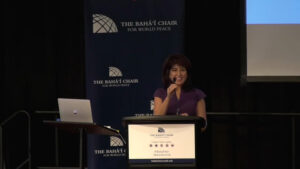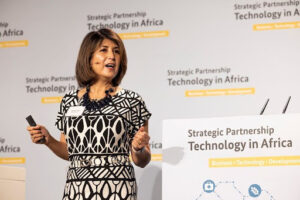Why your pension, 401(k), and public dollars are quietly funding dominance, displacement, and the surveillance state?—?and how we reclaim capital for peace.
Photo by Igor Shalyminov on Unsplash
Author’s Note: I’ve been thinking about this for over a decade now. Today, I finally found the words to express what I’m seeing. Thank you Nassir Criss for the compelling conversation this morning.
TL;DR
- Venture capital has fueled inequality and the surveillance state?—?funded with public pension money.
- Unicorns weren’t anomalies; they were accelerants for wealth concentration and civic instability.
- We’ve subsidized dominance at the cost of middle-class stability, tax revenue, and democracy.
- It’s time to fund peace infrastructure: dignified jobs, local economies, and community resilience.
How to Read This:
This piece is divided into clear sections. Click to jump:
- From Builders to Extractors — How VC shifted from building companies to extracting value
- The Surveillance State Was a VC Exit — Why Palantir and TikTok are not anomalies
- What’s at Stake: Peace or Collapse — The real cost of funding instability
- The CalPERS Conundrum — When pension dollars fund social erosion
- Trabajo Digno: Our Forgotten KPI — Why dignity-centered work should be the new North Star
- Venture Capital as Peace Infrastructure — The path forward
The Venture Capital We Need Now: Investing in Stability, Not Just Scale
When I arrived in Palo Alto in 1979, Hewlett and Packard were legends. The HP Way wasn’t just a company memo?—?it was a lived philosophy. Bill and Dave didn’t just build an iconic business; they built a community. They helped found Parents Nursery School, the co-op preschool my son later attended. They volunteered. They gave back. They showed up. Success wasn’t separate from service?—?it was service.
That was the original Silicon Valley. You built a company that people respected. You treated employees like partners. You gave generously, not performatively. You stayed rooted.
Fast forward to now, and no one coming out of Stanford dreams of working at HP. It’s seen as B-tier, a relic. Not cool. Not where you’ll strike it rich with your options. But HP stood for something we’ve lost?—?dignity, integrity, responsibility. It stood for the long game. And that matters.
From Builders to Extractors
When Venture Capital Picked the Winners of Our Future
In my 30s, I realized something that has stayed me: venture capital shapes the reality we all live in. Venture capitalists, often elite men, decide, through their checkbooks, what the future will look like. How we live, how we work, possible careers created or taken away.
The Rise of the Unicorn Era
But in the late 2000s, something changed. Venture stopped funding real businesses and started chasing unicorns. Network effects became the obsession. Founders were told to blitzscale, dominate, burn cash. Valuation became the scoreboard. Fundamentals? Optional.
Unicorns didn’t exist in the 1990s venture world. That era funded companies with customers, revenue, and a reason to exist. Companies didn’t go IPO until they had at least two consecutive quarters of profitability. But the unicorn era ushered in something else: a pipeline to the 1%. A financial rocket launcher for wealth concentration, disguised as innovation.
And here’s the insight that hit me like a lightning bolt during a conversation this morning:
Venture capital has been complicit in the greatest wealth transfer of our time.
We used public money to fund dominance?—?then called it innovation.
We all know about the staggering rise in income inequality. But few have connected the dots between VC funding models and that wealth transfer. While the media points to billionaires and monopolies, the source code often begins with venture term sheets.
VCs poured capital into companies like Amazon, Facebook, Uber, and others?—?not to build profitability, but to build dominance. They wrote check after check to keep these companies alive while they undercut and destabilized profitable, community-rooted incumbents. They didn’t care about cash flow; they cared about conquest.
And here’s the real kicker: the money that fueled that disruption came from pension funds.
When Surveillance Became a VC Exit
Future Union, a watchdog organization, has noted that this practice extends beyond domestic investments. In a 2024 report, they highlighted that U.S. pension funds?—?like those of New York’s police officers, firefighters, and teachers?—?had invested millions in ByteDance, the Chinese parent company of TikTok. The report warned:
“This highlights a general trend that, despite the geopolitical tensions, US fund managers continue investing in the startups they view as leading in technology advancement and capable of generating higher returns?—?even if it means ignoring the long-term implications of supporting an adversarial ecosystem.”
The surveillance state is not a separate problem?—?it’s a byproduct of the same system. Unicorns like Palantir weren’t just overvalued?—?they were overfunded by public money in pursuit of dominance. The fact that they now underpin predictive policing, biometric monitoring, population tracking, and algorithmic governance isn’t a glitch?—?it’s the logical endpoint of venture capital’s growth-at-any-cost model.
We used pension money to bankroll companies that don’t just sell ads or services?—?they build the infrastructure for surveillance and control. While Trump has weaponized agencies like ICE, and DOGE now has sweeping access to social security and tax data?—?they increasingly interface with tools developed by venture-funded firms.
We are now vulnerable to reverse targeting by the very state systems we helped construct in the name of innovation.
But hey?—?the venture returns looked great on paper.
The Surveillance Tech in Your Retirement Account
Eventually, these companies make their way into our 401(k) portfolios as well. Vanguard, for example, is the largest shareholder of Palantir?—?the ultimate surveillance tech company. So even if you’re not a pension fund investor, you’re likely exposed through your retirement account.
We’ve collectively become passive investors in the very systems that track us, scrape us, and sell us back to ourselves.
Typical LPs in venture capital include teachers’ retirement systems, firefighters’ pensions, public employee funds. Everyday workers. People looking for stability and long-term security. Their money was used to subsidize business models that eroded the very middle class they belonged to.
That is the hidden architecture of our inequality crisis.
Inequality and surveillance are not only economic and political concerns?—?they are direct threats to social well-being and peace. Singapore offers one model: economic prosperity at the cost of civil liberties.
But the American promise was different. It aimed to couple economic opportunity and civil liberty. Today, we are failing at both.
We have created a system where public money fuels private gain, civic trust is eroded, and the infrastructures of control are being built faster than the infrastructures of care.
Non-Ergodic Returns, Public Risk
Aka Casino Economics and the house always wins
It’s also a textbook example of a non-ergodic system: a structure where risk and reward aren’t evenly distributed over time or across participants. Venture capital operates like a casino where a few winners reap compounding benefits, but the system’s losses?—?especially job losses, tax base erosion, and social instability?—?are absorbed by the public.
This brings me back to what I’ve long called the CalPERS conundrum: California’s own retirement fund investing in venture-backed companies that ultimately eliminate jobs, automate livelihoods, and erode the very tax base that supports the pensions they’re trying to grow. It’s circular logic that collapses under scrutiny?—?and it’s happening at scale.
I remember attending a digital cities conference back in 2018. A panelist?—?the Chief Innovation Officer from a mobility startup?—?was enthusiastically describing the future of autonomous trucks. No more truck drivers needed! I was thatwoman in the back of the room who went to the mic and asked, “What happens to the local economies along I-5 in the Central Valley that rely on truck stops and services for drivers?” He brushed it off by invoking the Industrial Revolution?—?basically saying, you can’t stand in the way of progress. Job losses were someone else’s problem.
Later, he talked about how autonomous electric vehicles would mean no speeding tickets, no gas tax paid?—?and I asked, “How will local and state governments fund road maintenance, since gas taxes are a key source of that revenue?” Again, no answer. Somebody else’s problem.
That’s when the CalPERS conundrum clicked into place for me. On one hand, the state is investing in companies that automate away jobs. On the other hand, it’s responsible for providing social services and infrastructure?—?funded by the very tax base those companies are eroding. It’s a self-defeating loop.
The Logical Madness of the System
Now, to be clear: it’s entirely logical for pension funds to invest in venture capital. Venture capital, as an asset class, has historically delivered strong returns. And pension funds have a fiduciary responsibility to grow their assets for current and future retirees. They are doing exactly what they are supposed to do?—?allocating capital where it performs.
VCs, likewise, are doing what they’re designed to do: investing in innovation. But here’s the problem?—?the innovation we have now has become toxic.
Innovation that destabilizes society isn’t progress?—?it’s harm at scale. Instead of solving big human problems or creating shared prosperity, it’s eroding our labor base, gutting local economies, and destabilizing civic infrastructure. It optimizes for efficiency, not dignity. For scale, not resilience.
Optimization Gone Wrong: The Paperclip Problem of Capital
But what we do need to examine is the blind spot in how we evaluate returns.
As the sage said, the road to hell is paved with good intentions. Pension funds sought safe, high-yield investments. VCs sought market dominance and rapid scale. Each actor followed their mandate. No villain required. But like the infamous AI paperclip maximizer, the system optimized so narrowly for financial return that it created widespread, unintended harm?—?hollowing out the very social and economic fabric it depended on. If the short-term gains for pension funds are accompanied by long-term losses in employment, public tax revenue, and community stability?—?then the system is working against itself. A 15% IRR on a VC investment doesn’t look so good when it contributes to a declining tax base and rising costs in unemployment and social support.
To put numbers behind it: in 2023, U.S. public pension funds invested nearly $7.7 billion into venture capital funds. These include retirement systems for teachers, firefighters, and public workers?—?people whose daily labor holds society together. Their savings were used to subsidize startups that often disrupted their own communities, depressed wages, and hollowed out local economies. Meanwhile, the returns flowed upward into the hands of a few elite founders and investors.
Contrast that with this: some teacher pension funds have chosen to divest from for-profit prison companies?—?not because of poor returns, but because those companies were directly harming the very communities those teachers serve. That shows us it’s possible to apply a moral lens to capital allocation. The question is: why doesn’t that same lens get applied to tech?
Every decision?—?every due diligence memo, every funding signal?—?carries weight. If you’re putting your capital behind founders whose business model is “replace workers with software and extract value at scale,” you’re contributing to societal fragility.
You could just as easily say: I back founders who create jobs. Who build economic stability. Who understand that ingenuity isn’t just about code?—?it’s about community. That, my friends, is peace tech.
Trabajo Digno: Our Forgotten KPI
According to Mexico’s Federal Labor Law, trabajo digno (dignified work) is defined as employment in which the human dignity of the worker is fully respected. It must be free from discrimination of any kind, and guarantee access to social security, fair remuneration, continuous training, safety, hygiene, and the possibility for advancement. It affirms the right of workers to be treated with respect and to develop personally and professionally, regardless of their origin, gender, age, or economic status.
When I travel to Mexico, I hear it all the time:
“Es trabajo humilde, pero es trabajo digno.”“It’s humble work, but it’s dignified work.”
The gardener. The taxi driver. The airport shuttle guy who clearly has a degree and a sense of pride in what he does. There’s no shame. There’s camaraderie. There’s meaning. That’s something we’ve lost in the U.S.
In the States, if you’re a janitor or a housekeeper, you’re expected to feel embarrassed. No one says, “but it’s dignified work.” Our cultural lens filters labor through status and shame.
But I don’t see it that way. Trabajo digno is a core value. A cultural treasure. And it should be a guiding principle for capital.
What if, instead of chasing the next 10-bro AI exit, we invested in a company that created 100,000 solid middle-class jobs? Jobs where people can buy a home, educate their kids, save for the future?
That’s what real innovation looks like to me. Trabajo digno the HP Way.
Venture Capital as Peace Infrastructure
If your portfolio reduces jobs, erodes wages, and concentrates wealth?—?you are not a passive player. You are funding instability.
If your investments create economic dignity, stable incomes, and pathways to the middle class?—?you are funding peace.
Capital is never neutral. It either stabilizes or destabilizes. Choose peace.
This is the true power of venture: to seed systems. To design for social stability. To be a builder of peace infrastructure, not just a gambler on returns.
Let’s stop pretending we’re just neutral capital allocators. You’re either contributing to resilience or fragility. There is no third path.
I don’t want to fund unicorns. I don’t want to fund the surveillance state. I want to fund companies that quietly, powerfully stabilize communities. That embody trabajo digno. That make the future less extractive, more livable.
That’s the kind of venture capital the world needs now.
Like this Piece?
Let’s talk about how to build portfolios that serve peace, prosperity, and dignity. I’m looking to collaborate with funders, founders, and policymakers ready to think differently.
Connect with me on LinkedIn.
Footnote: The “paperclip maximizer” is a thought experiment by philosopher Nick Bostrom. It describes an AI programmed to maximize paperclip production that?—?without constraints?—?might convert all matter, including humans, into paperclips. The metaphor illustrates how single-goal optimization can lead to catastrophic unintended consequences when values and safeguards are not included.
References
- Hewlett-Packard. “The HP Way.” https://www.hp.com/us-en/hp-information/about-hp/history/hp-way.html
- Gobierno de la Ciudad de México. “Programa de Trabajo Decente para la Ciudad de México.” https://www.trabajo.cdmx.gob.mx/trabajodecente
- El Economista. “Trabajo decente, una deuda pendiente con el 60% de la fuerza laboral de México.” https://www.eleconomista.com.mx/capitalhumano/Trabajo-decente-una-deuda-pendiente-con-el-60-de-la-fuerza-laboral-de-Mexico-20221006-0071.html
- CB Insights. “The Complete List Of Unicorn Companies.” https://www.cbinsights.com/research-unicorn-companies
- TechCrunch. “The Age of the Unicorn: How Startup Valuations Reached the Stratosphere.” https://techcrunch.com/2021/04/15/the-age-of-the-unicorn-how-startup-valuations-reached-the-stratosphere
- Dakota. “Top 10 Public Pensions Investing in Venture Capital Funds in 2023.” https://www.dakota.com/resources/blog/top-10-public-pensions-investing-in-venture-capital-funds-in-2023
- IMD. “Why Pension Funds Are Moving Beyond Stocks and Bonds.” https://www.imd.org/ibyimd/finance/the-great-diversification-why-pension-funds-are-moving-beyond-stocks-and-bonds
- NY Post. “NYPD, FDNY, Teachers and NYC Worker Pension Funds Have Millions Sunk in TikTok Parent ByteDance.” https://nypost.com/2024/05/14/nypd-fdny-teachers-and-nyc-worker-pension-funds-have-millions-sunk-in-tiktok-parent-bytedance
- CNBC. “New York Teachers Fund Dumps Private Prison Stock.” https://www.cnbc.com/2017/10/23/new-york-teachers-fund-dumps-private-prison-stock.html
- The Guardian. “California Teachers’ Pension Fund Divests from Private Prisons.” https://www.theguardian.com/us-news/2019/jul/18/california-teachers-pension-fund-divests-private-prisons
About the Author
Margarita Quihuis is a peace technologist, behavior design expert, and Silicon Valley veteran. She’s the executive director of the Peace Innovation Lab at Stanford, former director of Astia (the first tech incubator for women), and a pioneer in funding women and founders of color. Her work spans venture capital, human-centered design, and systemic innovation for peace. Margarita splits her time between California and Mexico, where she continues to build the future we all deserve.
Connect with her on LinkedIn.





